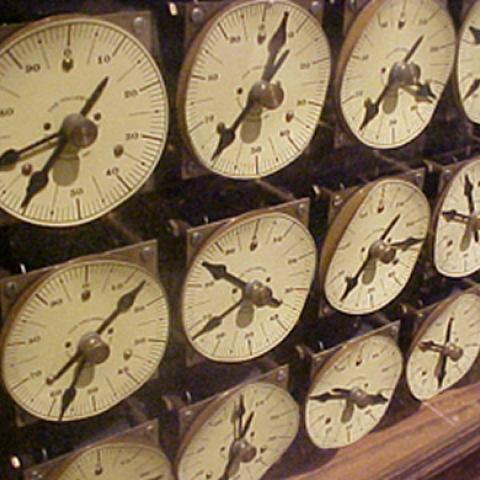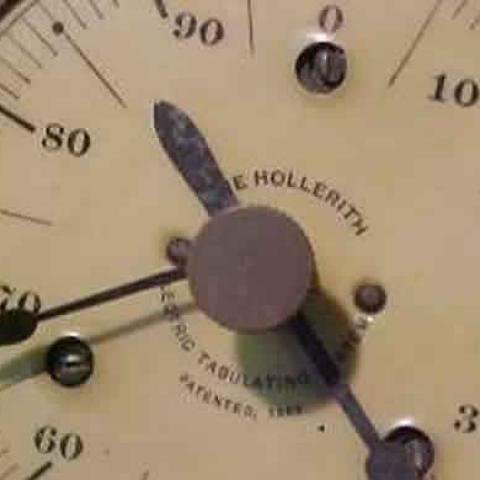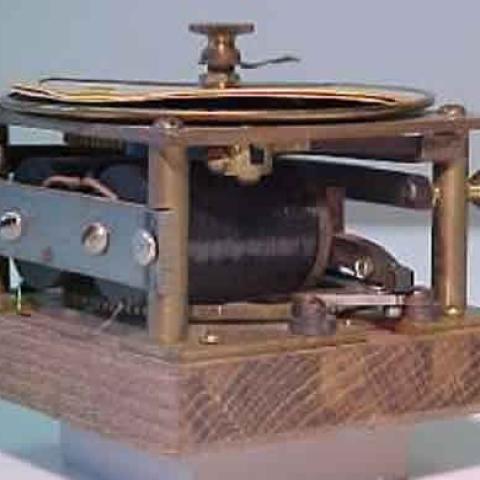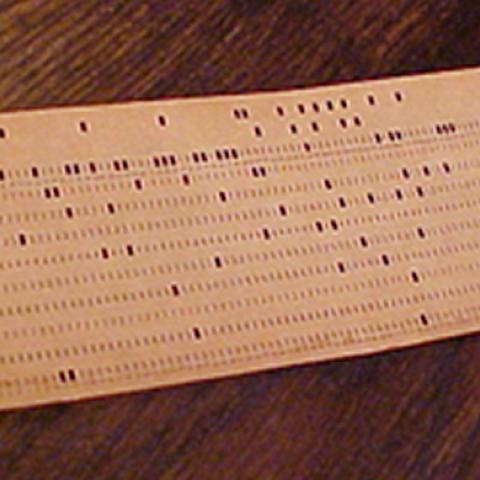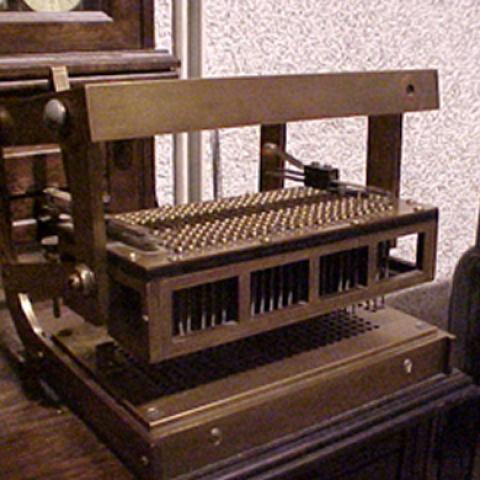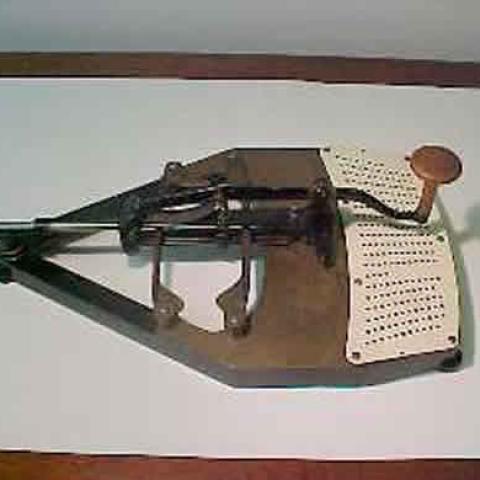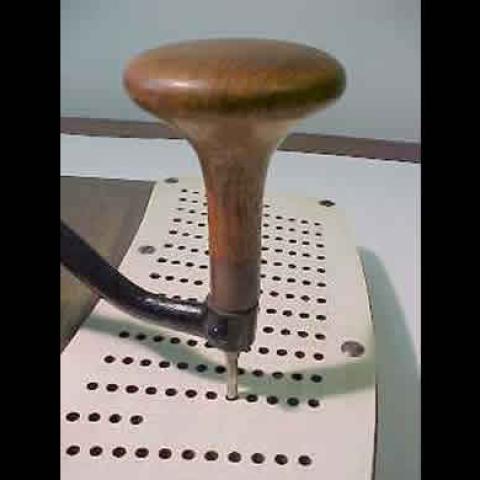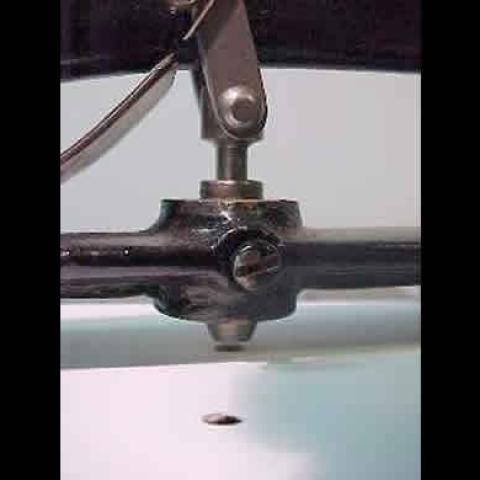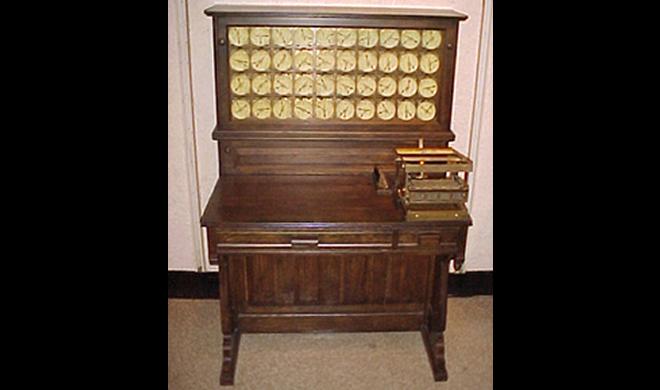
The month of April provokes a variety of thoughts in different people. While some may pleasantly think of its showers giving way to May flowers, many others are faced with more ominous thoughts of a looming tax deadline. As tele-filing and electronic forms become more popular, it is easy to forget about the ways such tasks were managed in the past. Could you imagine collecting data by means of an electric tabulating system? Not exactly sure what that means? If you're not too busy with your tax forms, read on...
Herman Hollerith was born in Buffalo, New York, in 1860, the son of German immigrants. He enrolled in the City College of New York at age 15 and graduated from the Columbia School of Mines at age 19 as a Mining Engineer with distinguished honors. Herman's first job was with the United States Census effort of 1880. He then taught mechanical engineering at the Massachusetts Institute of Technology (MIT) and worked for the U.S. Patent Office as well. The young engineer began working on his tabulating system during his days at MIT, filing for the first patent in 1884. Hollerith invented his Electric Tabulating System to:
"...provide an apparatus or system which will reduce the labor necessary in the compilation of such statistics, which will increase the rapidity of making complicated tallies, and which will insure accuracy. In other words, the object of my invention is to generally facilitate the compilation and increase the scope of such statistics."
Hollerith's system was first tested on tabulating mortality statistics in late 1886. The United States Census Office used Hollerith's machine for the first time in tabulating census data punched on cards for the 1890 Federal Census, the nation's eleventh census. Data was recorded by punching holes in these cards, or strips of non-conducting paper, and then counting these by mechanical counters operated by electromagnets. Hollerith developed a hand-fed press that sensed the holes in the punched cards; a wire would pass through the holes into a cup of mercury beneath the card, closing the electrical circuit. This process triggered mechanical counters and sorter bins and tabulated the appropriate data.
Data collected during the 1890 census included: color or race; gender; age; relationship that each person had to the head of the family; profession, occupation, or trade; number of months unemployed during the census year; whether sick, disabled, crippled, maimed or bedridden; deaf, mute or blind; whether or not the person attended school during the census year; ability to read or write; the place of birth of the person; and finally, the place of birth of the person's father and mother.
Hollerith's system—including punch, tabulator, and sorter—allowed the official 1890 population count to be tallied in six months. The system was again used for the 1891 census in Canada, Norway, and Austria, and later for the 1897 census in Russia. From 1908 on, the Hollerith Punched Card System—now consisting of a card punch, a Gang punch, a vertical sorting machine and a non-printing tabulator—was exclusively used in industrial, commercial, and similar areas for cost accounting, sales analysis, wage accounting, and a few other applications.
The Committee on Science and the Arts of The Franklin Institute awarded Hollerith the prestigious Elliott Cresson Medal for his "machine for tabulating large numbers of statistical data" in February 1890. He received several other honors, including the Gold Medal of the 1889 Paris Exposition and the Bronze Medal of the World's Fair in Chicago in 1893.
In 1896, Hollerith founded the Tabulating Machine Company for the marketing and production of his tabulating system, which was at the time in a transition phase from census statistical work to commercial applications. His system was used again for the United States census of 1900. In 1902, Congress made the Census Bureau a permanent institution and it began preparations for the census of 1910. For a number of reasons, especially the expiring of Hollerith`s main patents in mid-1906, the Bureau decided to develop a tabulator of its own, which was in place in time for the 1910 census.
A 1911 merger transformed the Tabulating Machine Company into the Computer Tabulating Recording Company (CTR). Hollerith served as a consulting engineer with CTR until 1921. In 1924, CTR was renamed International Business Machines Corporation, better known today as IBM.
Note: Some information was contributed by: "The House for the History of IBM Data Processing" in Sindelfingen, Germany.
Note: The objects pictured above are part of The Franklin Institute's protected collection of objects. The images are © The Franklin Institute. All rights are reserved.


